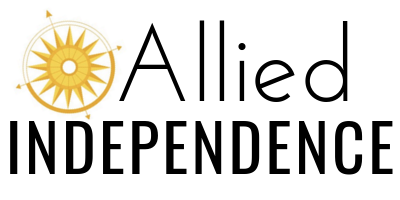The Transition Skills Our Students with Visual Impairments are Missing
Transitioning from K-12 to higher education can be a daunting experience, particularly for students with visual impairments. This shift is not just about moving to a new academic environment; it’s about navigating a world where the rules of engagement are vastly different. Carrie Williams, Director of Student Disability Services at Texas A&M University-Commerce, shared valuable insights on how to better prepare these students for success in post-secondary education.
Empowering Yourself for Success in School and Beyond
A key takeaway from Carrie’s experience is the crucial role of self-advocacy. While K-12 education often involves teachers and parents advocating on behalf of the student, the shift to post-secondary education requires students to take the lead in advocating for themselves. This includes not only knowing what accommodations they need but also understanding and communicating why they need them.
Start Early: Teaching self-advocacy should begin well before students reach high school. Even young students can learn to express their needs and understand their accommodations. By the time they enter college, they should be comfortable discussing their disabilities and the specific ways they impact their learning.
Navigating the Mindset Between Access and Success
"The accommodations that I provide are for access for students. They're not to ensure success, and that's a little tricky, and that it sounds kind of icky when I say it like that. You know, I want my students to be successful, but my job is to make sure that they have ACCESS."
In K-12 settings, accommodations are often designed to ensure student success, with teachers closely guiding students toward their goals. However, in higher education, the focus shifts to providing access rather than guaranteeing success. This distinction is important for both educators and students to understand. Accommodations in college are about leveling the playing field—giving students the tools they need to access their education, while the responsibility for success lies with the student.
Your Key Partner in Creating an Inclusive College Experience
Student Disability Services (SDS) play a crucial role in bridging the gap between K-12 and postsecondary education. Williams encourages students and their families to proactively reach out to SDS at potential colleges to understand the resources and accommodations available. Whether it’s understanding campus accessibility, transportation options, or available assistive technologies, this knowledge is vital in making informed decisions about where to attend college.
Finding the Campus That Aligns with Your Needs and Goals
When selecting a college, students with visual impairments should consider factors such as campus size, available public transportation, and the specific services offered by the university’s disability services office. Smaller colleges may offer a more personalized experience, while larger universities might have more extensive resources. The key is to reach out to each institution’s disability services office early in the application process to ask questions and ensure the campus environment is a good fit.
Strategies for Building a Pathway to Long-Term Success
“Be ready to make those, big leaps sometimes, and it's nerve wracking, and it's not always fun, but I think we can do it. We can make our students better.”
Educators and parents can help prepare students by focusing on life skills that promote independence. This includes teaching students to navigate public transportation, manage personal care, and communicate effectively about their needs. These skills are not only essential for college but also for future employment and independent living.
Setting the Foundation for a Smooth Move to Higher Education
Carrie Williams also highlighted the importance of connecting with external agencies like vocational rehabilitation services early in the transition process. These organizations can provide additional support, resources, and funding for assistive technologies that can ease the transition to college.
For TVIs and other educators, Carrie’s advice is clear: start transition planning early, focus on building self-advocacy skills, and ensure students are aware of the differences they will face in higher education. By doing so, we can help bridge the education gap for students with visual impairments and set them on a path to success in college and beyond.
Topics:
teacher of students with visual impairments, Student Disability Services, visual impairments progress and challenges, volunteer work, self-advocacy, assistive technology, student accessibility, higher education selection for students with visual impairment, higher education, K-12 , awareness, student growth, non-traditional students, impactful teaching practices, empowering students
